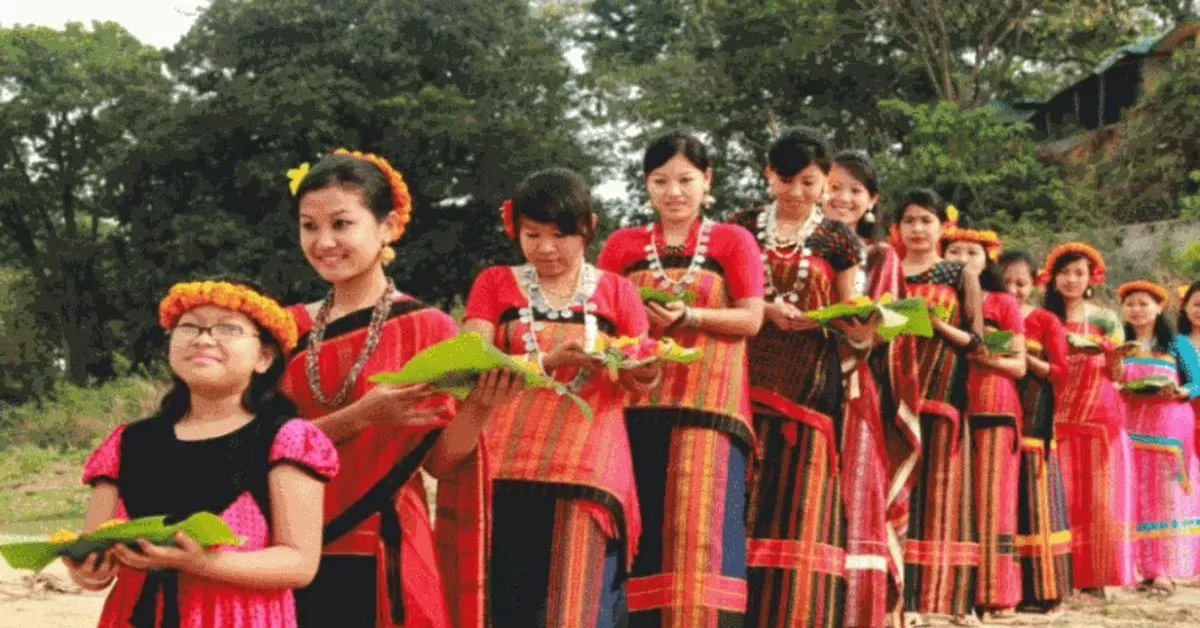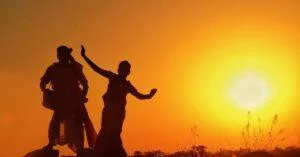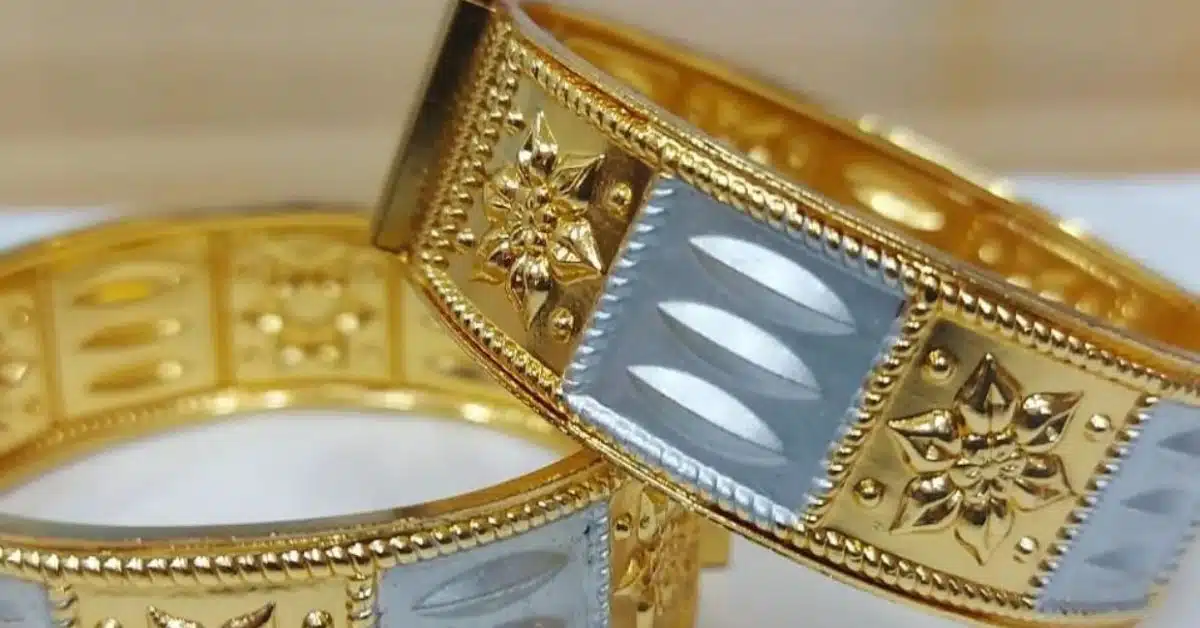Few decades ago, the Chakma tribe and the Hajongs tribe migrated have been rehabilitated in the Changlang and Miao Sub-divisions of Tirap district of Arunachal Pradesh. The Chakma tribe of Bangladesh migrated to India in the months of June and July 1964, and came to Silchar (in Assam) through the Mizo Hills.
The Chakma tribe were allowed by the Government to resettle in the Miao Sub-division of Tirap district. The influx of the Chakma refugees into the Tirap district continued up to March 1966. The total Chakma population in the district is about 20000. The Chakma tribe were also allotted plots of land for cultivation, and they have proved themselves to be expert agriculturists in terrace cultivation, which they had been practising in their former homeland in Chittagong Hill Tracts region of southeastern Bangladesh. Their farms have shown considerable productivity of food-grains, particularly maize and paddy.
Race and Language of the Chakma tribe
The Chakma tribe are an Indo-Mongoloid race. The name Chakma is sometime spelt as Tsakma, Tsak or Thek. The tribe is divided into forty clans, and each clan had a hereditary dewan or chief. Their language is a broken dialect of Bengali and is based on South-Eastern Bengali, but has undergone so much transformation that it is almost worthy of the dignity of being classed as a separate language. It is written in an alphabet which is almost identical with the Khmer character, which was formerly in use in Cambodia, Laos, Annam, Siam and the southern parts of Burma.
Folk Songs and Singers
The Chakma tribe has a rich treasure of folk songs and folk tales. The roving folk singers, who are called ganguili, are very popular. The ganguilis tell the tales of heroes and battles of the past in their songs. There are devotional singers as well. They would make offerings to their deities before a ballad is sung. The Chakma tribe have great regards for the ganguilis,and they believe that prophecy of the ganguilis always comes true.
Religion and Beliefs of Chakma Tribe of Arunachal
The Chakma tribesmen are mostly Buddhists with a regular Buddhist priestly order. But due to their long association with the Bengali Hindus of the Chittagong plains, certain Hindu rites and cults have been mingled with their Buddhist religious tenets. They have also preserved some age-old tribal religious practices. The Chakma tribe has their own version of Buddhism, which is strongly permeated with both Hindu and animistic rites. They worship Kali-the Hindu goddess. Magic and sorcery are also practised, but its usage is on a decline. Apparently, The main religious festivals of the Chakmas are Baisakhi Purnima,Kartika Purnima, Maghi Purnima, Phul Bihu and Bara Bihu. The Chakma tribe believe in the existence of the other world, according to which the good souls go to heaven, while the evil ones are sent to hell. They have also a belief in ghosts and spirits, for whose propitiation sacrifices are offered. The mystic rites performed by the Chakma Vaidyas (medicine-men) are believed to have had its origin in the Buddhist tantricism. The Vaidyas prescribe wearing of powerful magic thread. The help of a Vaidya is sought for dispelling an evil spirit, welfare of the community and of family, for good harvests and matters like that.
Medicines and Cures
The Chakma tribe has its own school of medicine. They consult their Vaidyas to get rid of; diseases and evil spirits causing illness. Various jungle roots are prescribed by the Vaidyas as cures. It is stated that their treatments of leprosy and snake bite are very effective even till date.
Death Rites of Chakma Tribe of Arunachal
The Chakma tribe dispose of the dead bodies by cremation. The corpse followers walk around the dead body seven times before it is given to the fire. The head of the male corpse is placed eastward while that of the female westward. The pyre is arranged in five and seven layers respectively for male and female dead bodies. No cremation is held on Sundays and Wednesdays. A Sunday cremation, according to the Chakma belief, has evil effects on the family of the deceased, while that on Wednesday brings evil to the village. When a distinguished man of a village dies, his body is taken to the cremation ground in a big and ceremonious procession, in a well-decorated chariot, on the top of which is placed a wooden crow and a wooden monkey.
Marriage and Morals
Marriage among the Chakma tribal people is arranged through negotiation, although love marriages are frequent. Free mixing of boys and girls are allowed in the Chakma tribal society and the young people get ample scope to make their choice. But consent of the parents for both sides is essential. Caste system does not exist in the Chakma society, intermarriage among the sects is allowed. But cross-cousin marriage and marriage between nephew and aunt are forbidden. If sexual relationship exists between the cross cousins, they are punished by the village elders. A fine of one or two pigs, some bottles of rice-beer and cash money is imposed on the culprits. If it happens to be a case between the aunt and her nephew, the woman is held mainly responsible for the relationship. She is put to shame publicly. Her hair is cleanly shaved, a hen-cage is tied to her neck and she is taken round the village in a procession, herself uttering the sin she has committed. A fine is also imposed on her. Polygamy is not unknown among the Chakmas. But only those who have plenty of wealth and property can afford to have more than one wife. Widow marriage is common but elaborate ceremony is avoided in such a case. In case of a widow who is a mother of one child, the intended husband is required to promise before the village elders to look after her child as his own. Divorce is allowed and the reason in most cases is adultery for which the man who is guilty for the divorce is required to marry the divorced wife, and feed the community as a punishment. During pregnancy, a Chakma tribal woman observes certain restrictions in her movements. She wears a magic thread prepared by the Chakma vaidya for protection of the child to be born. According to the code of restrictions, the pregnant woman must not answer a call at night even if she knows the voice of the person calling her. She should not go near certain trees nor visit the house of a widow and so on. At the time of delivery, a midwife together with some elderly women of the village helps her. After delivery she is considered unclean. Nobody visits her till the purification ceremony, performed by the midwife, which is held on the seventh day after the child’s birth.
Dress and Ornaments
The dress of the Chakma men is an adoption from that of the Bengali Hindus. They wear dhoti and shirt. But the female dress is typically tribal resembling that of the Burmese. The Chakma women wear Burmese lungi stretching from the waist to the ankles, and a long narrow piece of cloth on the breast. The skirt (lungi) and breast-cover are woven by the women themselves. Their ornaments are made of beads and silver.












